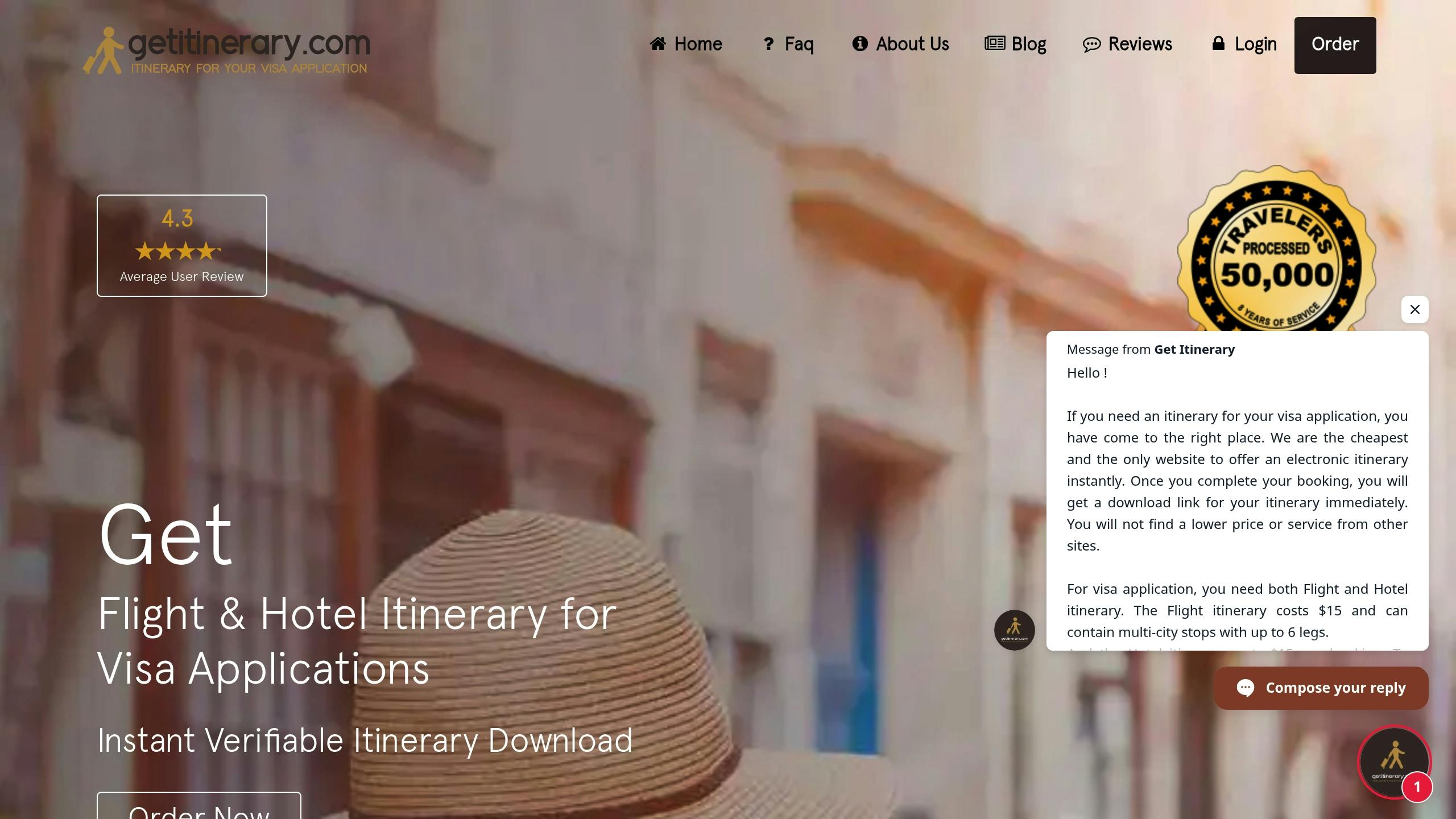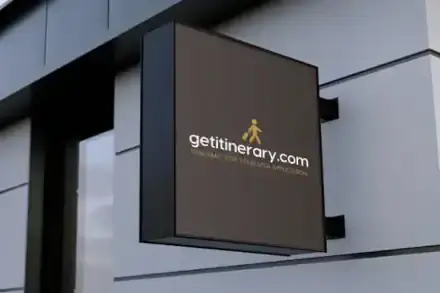7 Common Visa Application Mistakes to Avoid in 2025
Applying for a visa in 2025 is more complex than ever, with new digital systems, biometric requirements, and stricter documentation rules. Even minor mistakes can result in delays or denials. Here's what you need to know to avoid the most common pitfalls:
-
Missing or Incorrect Documents: Ensure all required documents (e.g., valid passport, financial proof, detailed travel plans) are accurate and complete.
-
Wrong Visa Type: Match your visa type to your travel purpose (e.g., tourist, business). Misalignment can lead to rejections.
-
Financial Documentation Errors: Provide clear, consistent evidence of financial stability, avoiding unexplained deposits or incomplete histories.
-
Application Form Mistakes: Double-check every field for accuracy, from personal details to travel dates.
-
Late Submissions: Apply early to account for longer processing times in 2025.
-
Travel Plan Issues: Submit flexible, verifiable itineraries, but avoid booking flights before visa approval.
-
Poor Interview Preparation: Be ready to explain your travel purpose, ties to your home country, and ensure consistent answers.
Pro Tip: Stay organized, review your application thoroughly, and use embassy-compliant services like Get Itinerary for travel plans. Preparing ahead can save you time and stress.
Mistakes That Ruin Every Visa Approval (DON’T DO THIS)
1. Missing or Wrong Documents
Mistakes in documentation are a common reason for visa rejections in 2025. As VisaFirst.com points out:
"Perhaps the most common error that visa applicants make is to not read the application instructions properly".
With the shift to digital submissions, ensuring all documents are accurate and complete is more important than ever.
Commonly Overlooked Documents
Here are some key documents that applicants often miss:
Travel Documentation
-
A valid passport with at least 6 months of validity beyond your planned stay
-
Previous passports, especially if they have relevant visas
-
Passport-sized photos (2x2 inches, white background)
-
Digital scans of the passport bio page (300 DPI minimum)
Financial Proof
-
Bank statements from the last 3 months
-
A recent employment verification letter (dated within 30 days)
-
Tax returns (for self-employed applicants)
-
Sponsorship letter, if applicable
Travel Plans
-
A detailed travel itinerary
-
Accommodation proof, such as hotel reservations
-
Return flight booking confirmation
-
Travel insurance documentation
How to Organize Your Documents
Follow these steps to keep your documents in order:
-
Create a Checklist: Download the official requirements from your destination's embassy and list all necessary documents.
-
Check for Quality: Use professional scans (300 DPI) instead of phone photos. Double-check that photos, dates, and other details meet embassy standards. Ensure financial documents are within the required timeframe.
-
Organize Digitally: Set up folders for each document type, name files according to embassy guidelines, and convert them to the required PDF format. Keep both digital and physical copies.
-
Final Review: Make sure all documents are signed, dated, and formatted correctly.
Pro Tip: Submit verifiable flight and hotel itineraries that meet visa requirements, but choose options that allow flexibility in case your plans change.
2. Wrong Visa Type Selection
Picking the wrong visa type can lead to big headaches. In 2025, rejection rates for Schengen visas for Indian passport holders reached as high as 20% [2].
Common Visa Type Mistakes
Many applicants end up with the wrong visa because they don't align their travel purpose with the correct category. Here are some common errors:
-
Tourist vs. Business Visa: Travelers sometimes apply for a tourist visa even when their trip involves business meetings or conferences. This can lead to rejection or even being turned away at immigration.
-
Work vs. Business Visa: Some assume a business visa covers work-related activities that actually require proper work authorization. This mistake can result in legal trouble and impact future applications.
To avoid these pitfalls, always double-check the visa category that fits your travel plans.
How to Find the Right Visa Information
-
Use tools like the U.S. Department of State's Visa Wizard to identify the right visa type.
-
Visit the destination country's embassy website for specific requirements.
-
Understand the immigration rules tied to your planned activities.
Key Steps to Take:
-
Define your main reason for traveling.
-
List out all planned activities during your stay.
-
Consider how long you'll be staying.
-
Check whether multiple visa categories might apply to your situation.
Important Note: The consular officer at the U.S. Embassy or Consulate makes the final call on your visa type and eligibility based on immigration law. Even if you're confident in your choice, be ready to explain it during your application. If you're planning multiple activities, focus on how your primary purpose matches the visa category you're applying for.
3. Incorrect Financial Records
Errors in financial documentation are one of the main reasons for visa denials in 2025. Accurate and complete records are crucial for approval.
Financial Document Requirements
Basic Financial Requirements
Your financial records should clearly show that you can support yourself during your stay. In 2025, most embassies typically ask for the following:
-
Bank statements from the last 6 months
-
Pay stubs or proof of income
-
Tax returns or transcripts
-
Evidence of assets
Common Financial Documentation Mistakes
Unexplained Large Deposits
Unexpected large deposits can raise concerns. Always provide documentation to explain these, such as:
-
Investment returns
-
Proceeds from property sales
-
Inheritance
-
Business income
Insufficient Account History
Opening a new bank account just before applying is a frequent mistake. Most embassies require 3–6 months of account history to assess financial stability.
If your income comes from nontraditional sources, you’ll need to provide extra documentation to clarify.
Special Situations
In 2024, freelance web developer John Smith successfully obtained a Schengen visa by submitting:
-
6 months of PayPal transaction history showing a consistent $1,500 monthly income
-
Employment certificates from his main clients
-
A detailed cover letter explaining how his income is structured
Alternative Financial Documentation
| Income Type | Documents Required |
|---|---|
| Rental Income | Lease agreement and payment receipts |
| Online Work | Employment certificate and transaction history |
| Sponsored Travel | Affidavit of support and sponsor’s financial records |
| Investment Income | Investment certificates and transaction statements |
Important Tax Considerations
If you’ve filed a tax extension for the current year, make sure to include:
-
A copy of IRS Form 4868
-
Last year’s tax transcript
-
A signed statement explaining the extension
Pro Tips
-
Maintain steady account balances
-
Avoid frequent transfers between accounts
-
Keep records of all income sources
-
Translate all documents into English
-
Ensure all statements are certified by your bank
Taking these steps can help establish your financial stability and improve your chances of moving forward in the visa application process.
sbb-itb-fb08fcc
4. Application Form Mistakes
Once you've confirmed your documents and visa type are correct, the next step is completing the application form accurately. Mistakes here can lead to rejection, even for minor errors. In 2025, attention to detail is more important than ever.
Form Completion Guide
Preparation Checklist
Before starting your application, have these on hand:
-
A valid passport
-
Educational records
-
Family details
-
U.S. contact information
Common Errors to Avoid
| Section | Frequent Errors | How to Avoid |
|---|---|---|
| Personal Information | Mismatched names or passport numbers | Double-check against your passport |
| Travel Dates | Dates don't match flight bookings | Confirm with your travel itinerary |
| Employment History | Missing details or timeline gaps | Include complete and current history |
| Address Details | Incorrect or incomplete formatting | Follow official postal address rules |
Steps for Accuracy
-
Name and Passport Details: Ensure every character matches your passport, including middle names, suffixes, and special characters.
-
Travel Information: Align your travel dates with your supporting documents. Use exact arrival and departure dates.
-
Employment and Address History: Provide up-to-date information. If there are gaps in employment or multiple residences, explain them clearly.
"It is critical for every applicable field on your visa application to be complete, and for the information on the form to be accurate. Simple mistakes can result in your application being denied." - Van T. Doan [1]
Digital Application Tips
-
Save your application ID number right away.
-
Complete the form in English, except for names or addresses in non-English characters.
-
Use "N/A" or "Not Applicable" instead of leaving fields blank.
-
Take screenshots of each completed page after saving your application ID.
Watch Out for Red Flags
Visa officers often focus on these issues:
-
Travel histories that don't add up
-
Unexplained gaps in employment
-
Conflicting details between current and past applications
Get a Second Opinion
Before submitting, have someone else review your application. A second pair of eyes can catch errors you might overlook. Focus on:
-
Spelling and grammar
-
Date formats (use MM/DD/YYYY for U.S. applications)
-
Consistency across all sections
-
Completing every required field
Any discrepancies between your application and supporting documents could lead to rejection. Double-check everything to avoid unnecessary delays.
5. Late Applications
Waiting until the last minute to submit your visa application can cause delays or even disrupt your travel plans. With processing times in 2025 becoming less predictable, it’s crucial to get your application in as early as possible.
Managing Deadlines Effectively
Staying on top of deadlines can help you avoid rushed or incomplete submissions.
Understanding Processing Times
Visa applications go through several steps, and processing times can vary widely. In some cases, administrative reviews might take as long as 180 days.
Digital Tracking Tools
| Tracking Method | Features | Benefits |
|---|---|---|
| USCIS Online Account | Status updates, address changes, notifications | Real-time tracking and document access |
| VFS Global Tracking | Online status updates, SMS notifications | Instant updates on important changes |
| USCIS Processing Times Tool | Estimated timelines, case inquiry options | Easier planning and expectation setting |
Planning Ahead
-
Set Up Digital Accounts: Create a USCIS account as soon as you submit your application. This gives you access to real-time updates, correspondence, and case inquiries.
-
Enable Notifications: Use tools like VFS Global for SMS alerts[4], email updates, and regular online checks to stay informed.
-
Start Early: Begin your application process well before your trip to account for delays. Build in extra time for gathering and verifying documents.
Potential Red Flags
Be alert for issues that could signal delays:
-
No updates after the standard processing timeframe
-
Missed correspondence due to outdated contact details
-
Errors or discrepancies in your receipt number within tracking systems
Best Practices for Monitoring Your Status
-
Keep your receipt number safe and easily accessible.
-
Update your address immediately if you move.
-
Log all communications with visa authorities for reference.
-
Use calendar reminders to check your application status regularly.
Submitting your application late can lead to rushed decisions, missing documents, and a higher chance of denial. Staying organized and proactive ensures a smoother process and reduces stress as your travel date approaches.
6. Travel Plan Errors
Incomplete travel plans can hurt your visa application. With stricter embassy requirements in 2025, submitting a detailed and accurate itinerary is more important than ever.
Travel Plan Mistakes to Avoid
Premature Ticket Purchases
Don't book flights before your visa is approved. The Italian Embassy clarifies:
"A copy of your flight reservation or round-trip ticket...In addition, buying your ticket in advance does not ensure that a visa will be issued to you".
Common Itinerary Issues
| Issue | Impact | Solution |
|---|---|---|
| Missing return flights | Raises overstay concerns | Include round-trip reservations |
| Unverifiable bookings | Application delays | Provide official hotel vouchers |
| Unstamped itineraries | Document rejection | Ensure travel agency validation |
| Mismatched dates | Credibility concerns | Align all travel documents |
These common errors show how important it is to double-check every detail in your travel plans.
Key Components of a Travel Itinerary
To meet embassy standards, your itinerary should include:
-
Round-trip flight reservations
-
Confirmed hotel bookings
-
Travel dates that match your visa period
-
Official stamps or validations from relevant agencies
With these elements, your travel documentation will stand up to embassy scrutiny.
Get Itinerary: Simplify Your Travel Documentation

Creating a visa-friendly itinerary can be overwhelming, but Get Itinerary offers a hassle-free solution. This service provides instant, verifiable flight and hotel reservations tailored for visa applications - without requiring actual bookings.
What Makes Get Itinerary Useful?
-
Immediate downloadable itineraries
-
Verifiable flight and hotel reservations
-
Support for multi-destination trips
-
Embassy-compliant documentation
For example, the Chinese Embassy specifies:
"Documents showing the itinerary including air ticket booking record (round trip) and proof of a hotel reservation, etc...".
Get Itinerary ensures your documents meet these requirements while allowing flexibility in case of date changes.
Tips for Success
-
Request your itinerary 2–3 weeks before your visa appointment
-
Double-check that all traveler details match your passport
-
Align itinerary dates with your visa duration
-
Keep copies of all travel documents for reference
As the Spanish Embassy notes:
"Confirmed reservation of your airline ticket (round-trip). Just a flight reservation is required. The itinerary must be stamped by the travel agency or airline...".
7. Poor Interview Preparation
The visa interview is often the final step in your application process, and lack of preparation can lead to denial.
How to Prepare for a Successful Interview
Get Your Documents in Order
| Document Type | Purpose | Notes |
|---|---|---|
| Passport and ID | Verifies your identity | Make sure these are up-to-date |
| Application Forms | Confirms submitted details | Include your DS-160 for U.S. visas |
| Financial Records | Shows financial stability | Bring the right financial documentation |
| Employment Proof | Demonstrates home country ties | Carry recent employment verification |
| Travel Documents | Clarifies travel purpose | Include your travel plans from Get Itinerary |
Having these documents well-organized will make your pre-interview review smoother and help you stay focused during the actual interview.
Prepare Before the Interview
-
Go over your DS-160 form carefully to ensure all details are consistent.
-
Practice answering common interview questions confidently.
Present Yourself Professionally
-
Arrive at least 30 minutes early.
-
Dress in business attire.
-
Maintain eye contact and stand confidently to make a positive impression.
Common Interview Mistakes to Avoid
Inconsistent Information
Your verbal answers must align with the details in your application.
Poor Communication
Listen attentively to questions, respond clearly, and don’t hesitate to ask for clarification if needed.
Weak Home Country Ties
Be ready to prove strong connections to your home country, such as employment, family, property, or career plans.
Struggling with Tough Questions
Stay calm when faced with challenging questions. If denied, ask for written reasons and a list of required documents for future applications.
Disorganized Documentation
Keep your documents in a neat folder. Make sure they’re current, translated (if required), easily accessible, and free of damage.
Visa officers evaluate not only your answers but also your overall presentation. A confident, respectful attitude and thorough preparation can make all the difference in securing your visa.
Conclusion: Steps for Success
The steps outlined above cover essential areas to focus on. Here's a quick recap to help you finalize your preparations.
Applying for a visa in 2025 requires careful attention to detail. By sticking to these tips, you can boost your chances and steer clear of common mistakes.
Double-Check Your Documents
Make sure your passport details are accurate to avoid any issues. Keep all your paperwork up-to-date and properly organized. The U.S. Department of State's Consular Electronic Application Center (CEAC) is a helpful tool for tracking your application status.
Plan Travel Smartly
Embassies recommend waiting until your visa is approved before buying tickets. Services like Get Itinerary provide flexible, embassy-approved travel plans.
Review Everything Thoroughly
Go over your application with someone you trust to catch any errors. Ensure every document is consistent and be ready to explain any details during your interview. Be honest - false information can lead to a permanent ban from getting a visa.
Use this checklist to wrap up your preparations:
| Final Checklist | Key Actions |
|---|---|
| Documentation | Confirm passport details and photo requirements |
| Travel Plans | Get a flexible travel itinerary from Get Itinerary |
| Application Review | Have someone review all documents carefully |
| Interview Prep | Practice answering questions and review your materials |
| Status Tracking | Monitor your application via the CEAC system |



